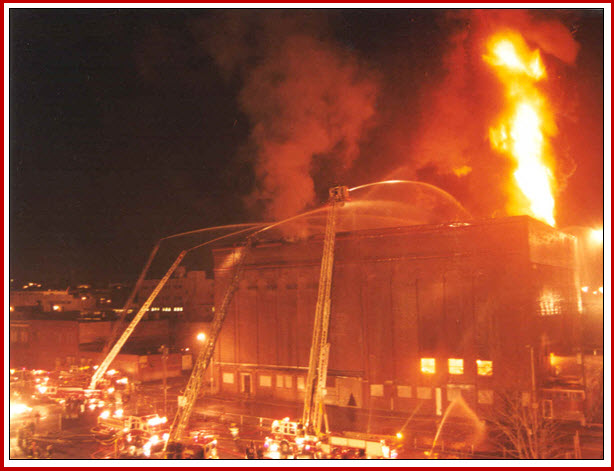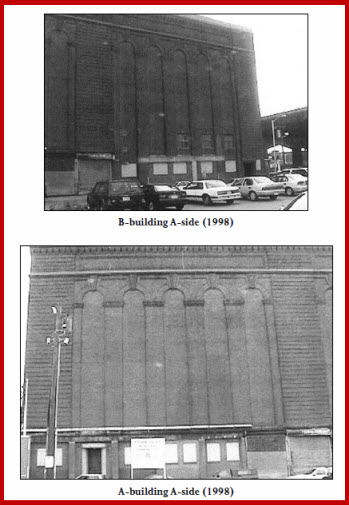Worcester Cold Storage Warehouse Fire 1999
By Christopher J. Naum, SFPE on Dec 04, 2010 with Comments 0
Friday December 3, 2010 marks the 11th anniversary of the Worcester Cold Storage Warehouse fire that resulted in the line of duty death of six courages brother firefighters.
For those of you who remember this event, take the time to reflect and honor the sacrifice made this day; to those of you who have not heard about the fire before- take the time to learn about the incident, the firefighters, the building, the operational factors and challenges, the courage, fortitude and convictions that define the American Fire Service, it’s honor, tradition and brotherhood.
The Worcester Six;
- Firefighter Paul Brotherton Rescue 1
- Firefighter Jeremiah Lucey Rescue 1
- Lieutenant Thomas Spencer Ladder 2
- Firefighter Timothy Jackson Ladder 2
- Firefighter James Lyons Engine 3
- Firefighter Joseph McGuirk Engine 3
On Friday, December 3, 1999, at 1813 hours, the Worcester, Massachusetts Fire Department dispatched Box 1438 for 266 Franklin Street, the Worcester Cold Storage and Warehouse Co. A motorist had spotted smoke coming from the roof while driving on an adjacent elevated highway. The original building was constructed in 1906, contained another 43,000 square feet. Both were 6 stories above grade. The building was known to be abandoned for over 10 years.
Due to these and other factors, the responding District Chief ordered a second alarm within 4 minutes of the initial dispatch. The first alarm assignment brought 30 firefighters and officers and 7 pieces of apparatus to the scene. The second provided an additional 12 men and 3 trucks as well as a Deputy Chief. Firefighters encountered a light smoke condition throughout the warehouse, and crews found a large fire in the former office area of the second floor. An aggressive interior attack was started within the second floor and ventilation was conducted on the roof. There were no windows or other openings in the warehousing space above the second floor.
Eleven minutes into the fire, the owner of the abutting Kenmore Diner advised fire operations of two homeless people who might be living in the warehouse. The rescue company, having divided into two crews, started a building search. Some 22 minutes later the rescue crew searching down from the roof became lost in the vast dark spaces of the fifth floor. They were running low on air and called for help. Interior conditions were deteriorating rapidly despite efforts to extinguish the blaze, and visibility was nearly lost on the upper floors. Investigators have placed these two firefighters over 150 feet from the only available exit.
A subsequent exterior attack was set up and lasted for over 20 hours utilizing aerial pieces and deluge guns from Worcester and neighboring departments. Task force groups from across the State of Massachusetts responded to initial suppression and subsequent recovery efforts. During this time, the four upper floors collapsed onto the second which became known as “the deck”. Over 6 million gallons of water were used during the suppression efforts.
According to NFPA records, this is the first loss of six firefighters in a structure fire where neither building collapse nor an explosion was a contributing factor to the fatalities.
KEY ISSUES
Abandoned building left unprotected and unsecured.
- The failure to properly secure and maintain security at this warehouse allowed vagrants to enter, live in, and cause a fire in the building.
- The lack of detection and suppression systems allowed the fire to grow unrestrained until discovered from the outside.
No barriers to prevent the spread of fire and smoke in a large space.
- Despite some floors having over 15,000 square feet of storage space, there were no rated fire walls, functioning fire doors, or even an interior finish that would help limit fire growth and the spread of heat and smoke.
Fire spread via combustible interior finishes.
- Being a cold storage warehouse, many walls and ceilings were covered with a combustible insulation material including cork, tar, expanded polystyrene foam, and sprayed-on polyurethane foam.
Delayed fire reporting
- The building occupants left the warehouse without notifying authorities, and the fire was reported by passing motorists who observed smoke venting from the roof.
- The absence of uncovered windows also prevented earlier detection from the exterior.
Access limitations for fire suppression and rescue.
- Building construction featured a single staircase from the basement to the roof. This vertical opening was the only way to move through all levels and was congested with men and equipment from the start of operations.
- The storage areas of the warehouse had no windows. These two factors left firefighters above the first floor without a secondary escape route and prevented ladder and rescue operations through windows.
Unusually long interior travel distances.
- Firefighters had to crawl over 200 feet through heavy smoke from the single staircase to conduct a proper search.
- Most lifelines were only 50 foot and SCBA air was limited to 30 minutes.
- Searches and rescue operations were ineffective under these circumstances.
Filed Under: History Repeating Events-HRE


























